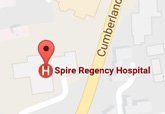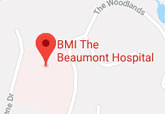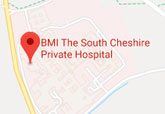Lumbar Foraminotomy
Lumbar foraminotomy is a decompression surgery involving the removal of bone and tissue obstructing the neuroforamen to release the pressure on the spinal nerve roots. The neuroforamen are the open areas on either side of the vertebrae through which the spinal nerves pass. When the neuroformen are obstructed it can cause compression of the nerve roots resulting in pain and irritation.
Nerve root compression can be secondary to certain spinal disorders such as spinal stenosis, herniated disc, degenerative disc disease, bone spurs and spondylosis. The common symptoms of a nerve root compression, in the lumbar region, include pain in the lower back, buttocks, feet and legs.
How is the procedure performed?
A foraminotomy involves the following steps:
- The patient is sedated before the procedure
- The patient lies on his/her abdomen, on the operation table
- An X-ray is used to identify the positioning of the incision
- An incision is made through the skin to approach the spine
- The muscles are retracted with the help of a retractor
- Specially designed cutting instruments are then used to remove bone spurs, thickened ligaments and segments of the herniated disc
- Removal of the bones and tissues around the neuroforamen releases the compression over the nerve roots
Based on various other factors such as location of the compressed nerve and the condition of the patient, a foraminotomy may be coupled with other procedures such as a laminotomy or laminectomy. A laminotomy involves the removal of a portion of the lamina whereas a laminectomy involves the complete removal of the lamina. The lamina is a small bony plate covering the spinal canal. These additional procedures provide a wider opening to the neuroforamen.
What are the steps recommended for post-operative care?
Patients are usually discharged on the same day of the surgery. Most patients experience pain relief immediately after the surgery. However, some may experience pain, due to muscle spasm, for a few days after the surgery. The doctor will prescribe medications such as muscle relaxants and pain killers for the management of such pain. General post-operative instructions for the patient after a lumbar foraminotomy include:
- Keep the incision clean and dry
- Avoid movements such as bending and twisting, for at least 6 weeks
- Regular intake of the prescribed medications
- Avoid heavy lifting
What are the associated risks and complications?
Lumbar foraminotomy is comparatively safe with minimal complications. Some of the potential risks of this procedure include bleeding, infection, leakage of the spinal fluid, nerve injury and injury to the spinal cord.




